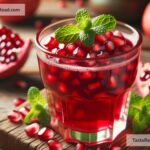The Surprising Truth About Spinach and Its Iron Content
Spinach is often celebrated as a superfood, packed with vitamins and minerals that are said to boost our health in countless ways. If there’s one nutrient closely associated with spinach, it’s iron. We’ve all heard stories about spinach being a powerhouse for building strength because of its high iron content — think of Popeye the Sailor Man, gulping down his can of spinach to grow strong and defeat villains. But here’s the surprising truth: the claim that spinach is overflowing with iron is not quite what it seems. Let’s dive into the fascinating details of spinach and its iron content.
The Spinach-Iron Myth
The idea that spinach is extraordinarily rich in iron dates back more than 100 years to a mistake made by a German scientist named Dr. Gustav von Bunge in the 1870s. When measuring the iron in spinach, von Bunge reported that it contained an astonishing 35 milligrams of iron per 100 grams of spinach. That’s a lot! This claim convinced many people that spinach was one of the best sources of iron you could eat.
However, it turns out there was an error in his calculations. Decades later, researchers discovered the decimal point in von Bunge’s findings was placed incorrectly — spinach actually contains closer to 3.5 milligrams of iron per 100 grams, not 35 milligrams. Despite these corrected findings, the “spinach-is-extra-high-in-iron” myth persisted for years, in part due to pop culture portrayals like Popeye.
Does Spinach Contain Iron?
It may be disappointing to learn that spinach doesn’t have 35 milligrams of iron per 100 grams, but that doesn’t mean spinach is completely out of the running as an iron-rich food. Spinach does contain iron—it just has an amount comparable to many other leafy greens and vegetables.
One cup of cooked spinach contains around 6.4 milligrams of iron, which is still a good amount. The problem, however, lies in how well your body can absorb that iron.
Iron Absorption and Spinach
When it comes to iron in food, there are two types: heme iron and non-heme iron. Heme iron comes from animal-based foods like red meat, poultry, and fish, and it’s the type of iron that your body absorbs easily. Non-heme iron, on the other hand, is found in plant-based foods like spinach, beans, and lentils. While non-heme iron is still valuable for your health, your body doesn’t absorb it as efficiently as heme iron.
What makes things trickier is that spinach contains a substance called oxalates. Oxalates are compounds naturally found in some plants, and they bind to iron and other minerals like calcium, making them more difficult for your body to absorb. In spinach, a significant portion of the iron is attached to oxalates, which means the iron isn’t fully available to your body. As a result, even though spinach contains iron, the amount that your body can actually use is lower compared to foods with heme iron.
Does This Mean Spinach is Overrated?
Not at all! Spinach is still an incredible vegetable filled with nutrients that benefit your health. While its iron content might not be as exceptional as once believed, spinach is packed with vitamins A, C, K, and folate. It’s also a fantastic source of magnesium, potassium, and fiber. Plus, spinach is low in calories, making it a great choice for people looking to maintain a healthy diet.
If you want to maximize the iron you get from spinach, there are a few tips you can follow:
-
Pair Spinach with Vitamin C-Rich Foods: Vitamin C helps your body absorb non-heme iron more effectively. Try eating spinach alongside foods like citrus fruits, tomatoes, bell peppers, or strawberries. For example, tossing spinach into a salad with orange slices or squeezing lemon juice over cooked spinach can enhance the amount of iron your body absorbs.
-
Cook It: Cooking spinach reduces its oxalate content, which can make some of the iron more accessible. Steamed spinach or sautéed spinach with garlic is not only tasty but also slightly better for iron absorption than raw spinach.
-
Pair with Other Iron-Rich Foods: Spinach can be one component of an iron-rich diet. Combine it with legumes, quinoa, or fortified cereals to ensure you’re getting plenty of iron overall.
Final Thoughts
The story about spinach and its iron content is a fascinating reminder that food myths can sometimes stem from simple mistakes — like a misplaced decimal point! While spinach isn’t the iron powerhouse it was once rumored to be, it’s still a highly nutritious food that deserves a place on your plate.
If you’re looking to boost your iron intake to prevent fatigue, improve your energy levels, or support your overall health, remember that variety is key. A balanced diet that includes both heme and non-heme iron sources will give you what you need. And don’t forget to enjoy spinach in all its glory—not for its supposed “superhuman” iron levels, but for the wide range of vitamins, minerals, and benefits it brings to your life. Popeye was right about one thing: spinach is still pretty great for your health!

